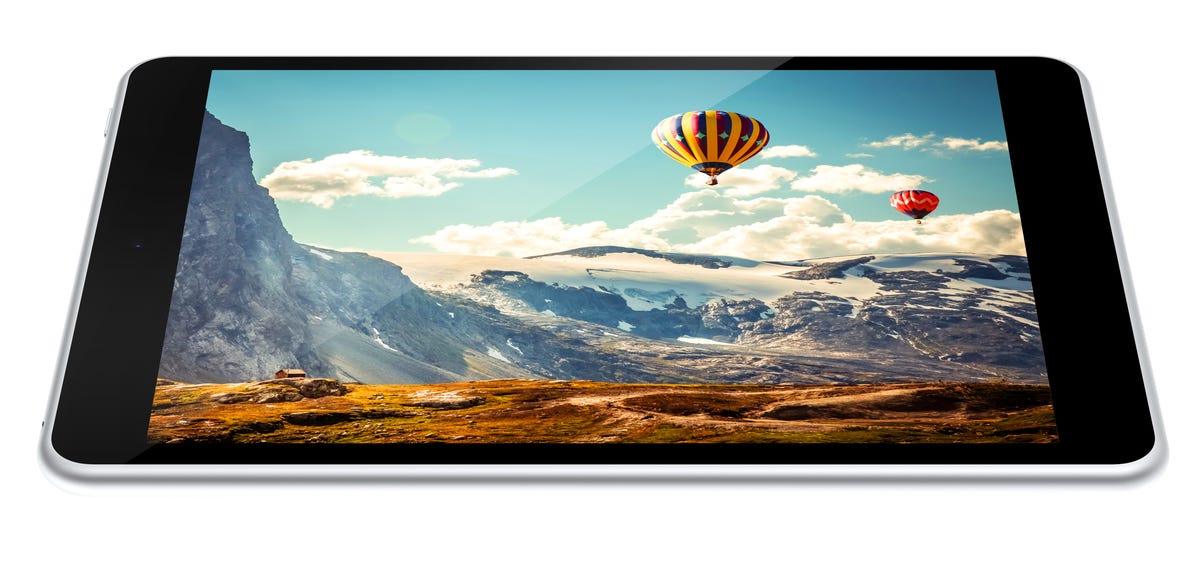
Nokia
Nokia, reborn after the sale of its phone business to Microsoft, on Tuesday unveiled an Android tablet: the N1.
Set to cost around $250, the 7.9-inch N1 tablet will be on sale in China before Chinese New Year — 19 February 2015. Prices and release dates for other countries were not announced, but that US dollar price converts to around £160 or AU$290.
Nokia’s N1 Android tablet looks a lot like an iPad (pictures)






+10 more
Finland’s former phone maker teased us on social media over the past few days with a new direction under the hashtag #Thinkingahead. Nokia’s head of products business, Sebastian Nyström, revealed the new direction at Slush 2014, an event for startups and technology companies held on Nokia’s home turf in Helsinki this week.
“The world doesn’t need yet another tablet,” Nyström said, claiming the N1 is for “anyone who hasn’t found the right Android tablet yet”.
Nyström also announced that Nokia’s Android launcher, Z Launcher, will be free on Google Play for Android devices from today. The N1 runs on the latest version of Android, known as Lollipop, but the Z Launcher forms the home screen. A launcher takes over your home screen and grid of apps, giving you a customised experience beyond the basic Android layout. Z Launcher is designed to customise the look of your phone by learning your habits and other indicators such as where you are, what time it is and what you’re doing. It also lets you search for apps by scribbling the first letter of the app’s name on the screen with your finger.
More on Nokia
- Nokia Lumia 735 review: One of the last of its kind
- Nokia unfolds its Here maps app to broader Android market
- Nokia unveils glowing wireless charger and Lumia screen sharing on TVs
- Nokia employees in China protest Microsoft layoffs
The N1 is encased in a 6.9mm thick one-piece aluminium frame, in either dark grey or silver — which, it must be said, looks distinctly similar to Apple’s iPad Mini 3 . It has an 8-megapixel camera on the back and a 5-megapixel snapper on the front, with 32GB of storage for apps, snaps, music and movies.
One of the most interesting things about the tablet is that it’s one of the first devices to boast a USB Type-C socket — that’s a reversible USB port so you can stick the plug in either way round.
Inside is a 2.4GHz Intel Atom quad-core processor. It’s a 64-bit chip, which is welcome and unusual for an Android device. Intel said late Monday that it plans to combine its PC unit with its struggling mobile chip division.
Nokia N1 vs tablet rivals (Wi-Fi-only models)
| Screen size | Resolution | Weight | Thickness | Price | |
| Nokia N1 | 7.9-inch | 2,048 x 1,536 (326ppi) | 318g | 6.9mm | From $250 |
| iPad Mini 3 | 7.87-inch | 2,048 x 1,536 (326ppi) | 331g | 7.5mm | From $399 |
| Kindle Fire HDX | 7-inch | 1,920 x 1,200 (323ppi) | 303g | 9mm | From $179 |
| Samsung Galaxy Tab 8.4 | 8.4-inch | 1,600 x 2,560 (360ppi) | 294g | 6.6mm | From $399 |
Nokia sold its phone business — and the use of the Nokia name for phones — to Microsoft in a multibillion-dollar deal earlier this year, leaving the Finnish company to continue the much more profitable business of making networking equipment and also running the Here maps apps and services.
‘An audacious move by Nokia’
Now that Microsoft has ditched the Nokia brand, starting with the newly announced Microsoft Lumia 535 , the real Nokia can once again release consumer products with its own name stamped on the side.
“This is an audacious move by Nokia,” says industry analyst Ian Fogg of IHS. “There will be those at Microsoft who will be startled by the speed and audacity of Nokia’s strategy. They shouldn’t be: Nokia has a long history of bold strategic moves.”
Having sold off the hardware manufacturing division, Nokia has partnered with Chinese manufacturer Foxconn to build and distribute the N1. After the failure of several previous licensing strategies including Symbian, Series 60 and the MeeGo partnership with Intel — not to mention the relatively short-lived adoption of Windows Phone — Fogg warns that the company will have to do better with its licensing, especially if it is to maintain Nokia’s reputation for decent hardware.
“China is a logical market to start,” says industry analyst Ben Wood of CCS Insight, compared to other markets “where the Nokia brand has been in decline for several years”. He describes the the announcement as “an opportunist move” while the Nokia brand still holds some weight, but notes that “the tablet space is a cut-throat business and it’s going to be tough for Nokia to make a big impact without spending a lot of money on marketing”.
Nokia has never dived headlong into tablets, with last year’s Nokia 2520 Windows tablet one of the few slates to ever emerge from Nokia’s Espoo HQ. The N1 Android tablet follows the ill-fated Android-powered Nokia X line of phones , revealed in February this year but snuffed out almost immediately as a casualty of the Microsoft deal.
“Microsoft will be pleased that it has accelerated away from the Nokia brand as quickly as it has,” reckons Ben Wood, as the Windows Phone company “needs to quickly establish Microsoft devices in their own right before this new Nokia tablet confuses customers”.




